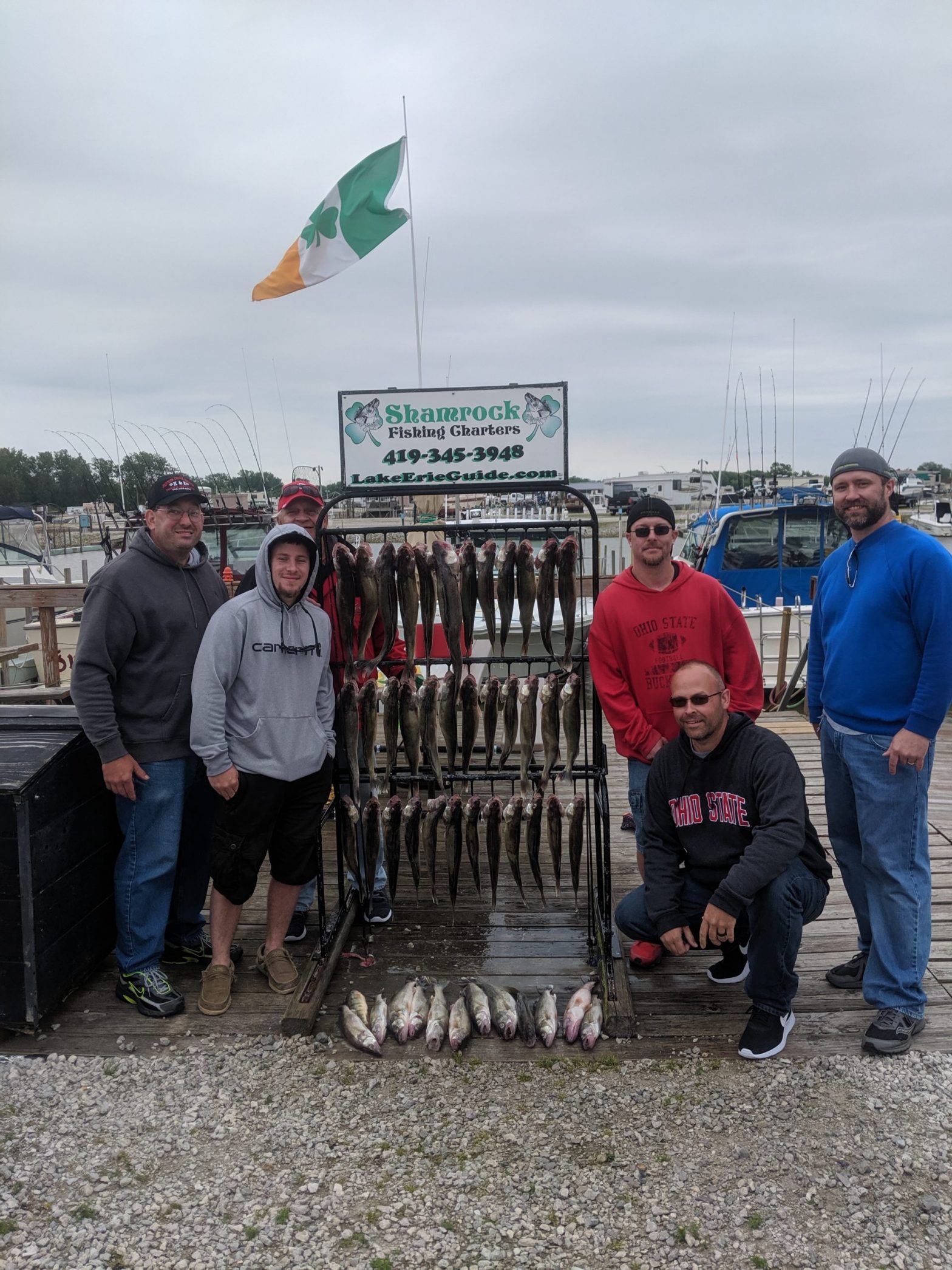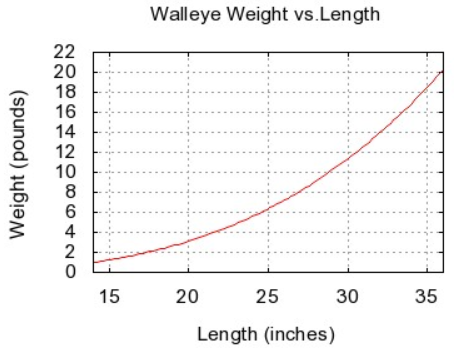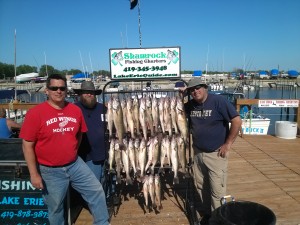Fishing a Lake Erie Weapon
This page will provide information on Lake Erie fishing techniques to help you catch more fish, including the elusive trophy walleye.
The advantage of fishing for walleye on Lake Erie is that you don’t need to use a variety of expensive lures in different weights and colors to be successful. I’ve discovered one effective tool that can do it all: a 16—to 18-inch piece of monofilament line with a snelled octopus hook. Then, put on 4 to 5 beads and a clevis. At the top of the weapon, make a 1 to 2-inch loop with a bead in the loop and tie an overhand knot.
You can change the weight of your egg sinker to make it heavier or lighter. You can also change the blade colors and sizes to find what works. I tie my weapons with 20 to 25 tests with a monofilament line.
Consider adding a quick-change clevis to your weapon to switch blades easily. A folded clevis is another option for securing your deep cup blade, as it rotates with the slightest movement.
A deep cup, number 4, Colorado, premium gold blade is used on Lake Erie. The deep cup blade spins much more quickly than a standard blade. We recommend spending the extra money on premium gold blades because they do not tarnish. The superior premium gold finish will flash much brighter. Effectively attracting walleyes can enhance your chances of getting more bites.
Adding a Nightcrawler to your hook
Nightcrawlers are a vital bait for walleye fishing on Lake Erie. Correctly placing your nightcrawler on your hook is crucial. Avoid clumping the nightcrawler when putting it on the hook.
Take a nightcrawler and carefully thread it onto the hook. The middle of the crawler leaves a nice, straight piece of bait hanging down. You should make a 2-inch tail that adds action to your lure, catching more fish. Don’t fool yourself and put a considerable nightcrawler of bait on your hook. You are not fishing for catfish! Vast piles of bait stop your spinner blade’s natural look and action. Remember that sinking and spinning are all part of this technique. Using a waded crawler reduces your chance of attracting a hungry walleye due to its deprecated action.
**The Lake Erie Swing Technique**
When your lure makes contact with the surface, lock your bail and start counting: “one thousand one, one thousand two,” and so on. A 3/4-ounce lure sinks at approximately one and a half feet per second. Therefore, counting to 16 will place your lure at a depth of 24 feet, just above the 25 feet where the walleyes are marking. As the lure descends, crank your reel enough to keep your line taut and retrieve any slack as it moves through the swing.
There is always a “sweet spot” when casting during a swing; the key is identifying it. Start by casting to the same area for about ten minutes. If you don’t get a bite, try moving your cast five feet up or downwind from the boat. Keep repeating this process until you find the sweet spot. Additionally, consider changing your casting angles to increase your chances of success.
Change Casting Angles
Adjusting your casting angles during the swing can help you find a hungry walleye. When you feel a peck or a heavier weight, set your hook and reel the walleye back to the net.
Observe the person next to the guy who is catching walleyes. Cast your lure the same distance and at the same angle into the wind. Retrieve your line at the same speed. If your lure hits the water before slowing down, you’ll likely be hooked on a walleye soon.
Fishing from various spots on the boat provides unique experiences. If someone is catching fish in a particular area, it’s best not to crowd them. They have likely figured out the proper technique from their location. Instead, please observe their actions and replicate them from your spot.
The Lake Erie Rod Sweep Technique
Stop reeling in your line, and instead, move your rod from side to side while keeping your lure spinning. Then, reel in as you sweep your rod back and forth to retrieve the lure again. This technique adds a jigging motion to your spinner, which can be very effective.
Use a smooth and consistent retrieve technique to return your lure to the boat. Reel in two or three times, pause for three seconds, and repeat until you reach the boat. You can also experiment with raising and lowering your rod tip while retrieving, which creates a jigging motion on your spinner and can attract more walleyes to bite. Remember to vary your technique until you find what works best for you.
Due to the wind and current, it would be best to experiment with different weights daily. The most essential part of drift fishing is knowing how many counts it takes for your lure to reach the bottom of the lake.
To increase your chances of catching walleyes, focus on getting your lure into the strike zone as often as possible. Take several practice casts and count down as you approach the bottom. Start reeling in two or three seconds before your lure hits the bottom to ensure your spinner blade is turning.
Lake Erie Bottom Bouncer Technique
To properly set a bottom bouncer, stop it two or three times on the way down so the lure straightens out and doesn’t tangle. Once your bouncer hits bottom, you must find the strike zone from here. Hit bottom and lock your bail. If the walleye are a few feet up, hit the bottom with your bouncer and crank it up one to six cranks on the reel. Most bouncer fish will be caught by you hitting the bottom and closing the bail on the reel. Or you are cranking the lure up two to four cranks off the lake bottom. This Lake Erie fishing technique is challenging to master initially, but after several tries, You should be “bouncing” like a pro and reeling in those walleyes.
Use the same technique when setting up bottom bouncers at the bow and stern of the boat. The bow usually produces more fish because it rises and falls with the waves, creating a natural action for the lures.
Fishermen on the downwind side can achieve similar lure action by raising their bottom bouncers and tight-lining them back to the bottom. We recommend using two-hook snell rigs about three to four feet long to separate the lures from the bouncers. If you’re not catching any fish, consider trying a different approach. Consistent change is vital to success.



